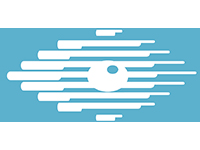Even if there are no risk factors or family history of eye problems, children need their vision checked at 6 months, 3 years, and before first grade.
The Importance of Your Children’s Vision Exams
Most states require children to have an eye exam prior to beginning public school. Even if your pediatrician doesn’t see a problem, there may be other signs that your child needs a more thorough eye exam.
According to the Optometrists Network, the symptoms of possible vision problems in children include:
- Poor school performance
- Not wanting to go to school
- Difficulty paying attention
- Difficulty when reading and writing
- Trouble seeing information on the chalk board
- Blurry or double vision
- Headaches or eye pain
- Taking longer than normal to complete homework
According to Repka, including an eye exam as part of each annual physical may be all a child ever needs.
However, if your child has any symptoms of vision problems, or has family members who wear glasses, she may need to visit an eye care professional for examination.
There are three types of eye specialists who can provide children’s vision care.
- Ophthalmologist
An ophthalmologist is a medical doctor who provides eye care, such as complete eye exams, prescribing corrective lenses, diagnosing and treating eye diseases, and performing eye surgery. - Optometrist
An optometrist is a health care professional who can provide complete eye exams, prescribe corrective lenses, diagnose common eye disorders, and treat selected eye diseases. Optometrists do not treat more complex eye problems or perform surgery. - Optician
An optician assembles, fits, sells, and fills prescriptions for eyeglasses.
These health care providers can be found in most commercial and residential areas. Some may be located in shopping malls and even larger commercial chains.
What to Expect During an Eye Exam
Pediatric groups in the U.S. have developed a national standard of care for children’s eye health exams.
Children’s eye exams should include the following components:
- Inspection of the eye: The health care provider inspects the eyes and eyelids, exams the various eye muscle movements, and examines the pupils and the reflection of light from the back of the eye.
- Ophthalmoscope: In older children, the eye care professional examines the back of the eye.
- Corneal light reflex testing: Using a small flashlight, the health care provider looks at spot where the light is reflected from the front surface of the eye, called the cornea. The light reflected should be in sharp focus and centered on both pupils. The test result is abnormal if the corneal light reflex is not crisp and clear, or if it is off-center.
- Cover testing: This test detects misalignment of the eyes. While the child focuses on a target, the examiner covers each eye one at a time to look for a “shift” in the eyes.
- Age appropriate visual acuity testing: Using an eye chart, the examiner asks the child to read numerous lines of characters. It is important to test each eye separately and to be sure that the child is not “peeking” with the other eye.
Your child’s health care provider may also ask you the following questions:
- Does your child seem to see well?
- Does your child hold books or other objects close to his or her face?
- Do your child’s eyes appear straight and focused? Or do they seem to cross or drift?
- Do your child’s eyes appear unusual in any way?
- Do your child’s eyelids droop or does one eyelid tend to close more than the other?
- Has your child ever had an eye injury?
Repka recommends that parents find an eye care professional who has experience treating children and who is familiar with children’s eye diseases.
Watch for Part Two of Children’s Eye Care Basics later this week!

